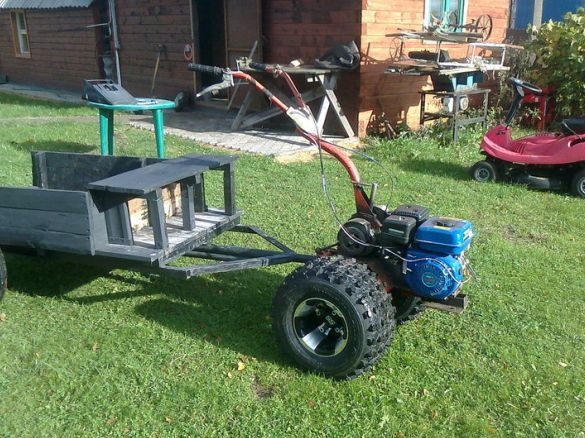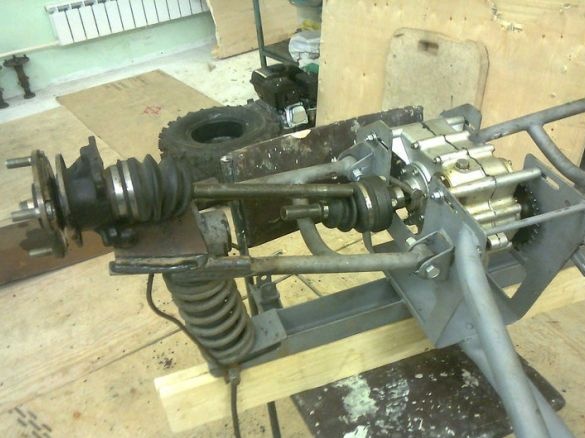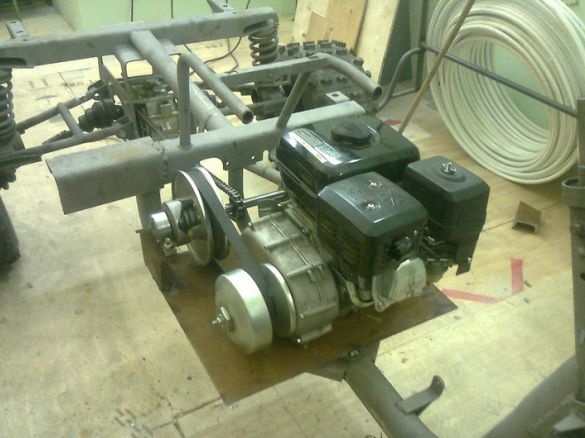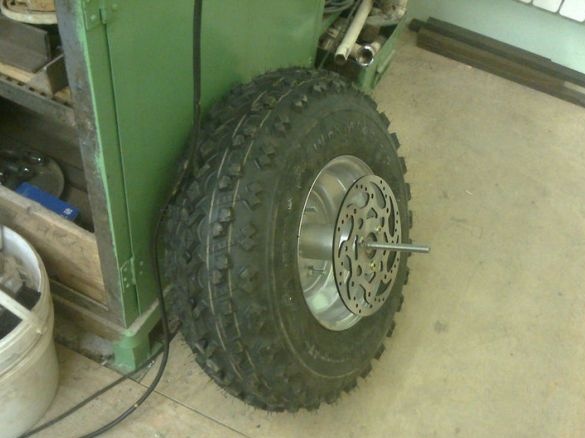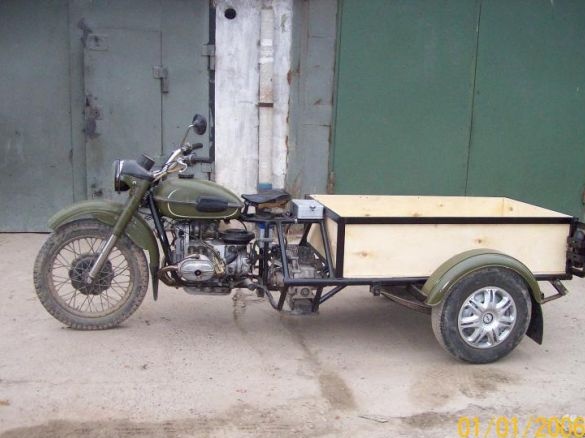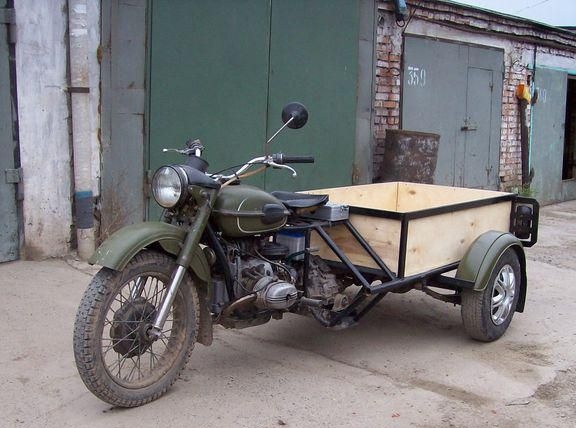
This light all-terrain vehicle going for help for work on a plot in the village. That is, he must transport sand, firewood. land along highways with average road conditions. Prior to this project, the author assembled a trolley on a walk-behind tractor, but it doesn’t differ in its special passability, nor in traction for transportation of heavy loads.
Used aggregates and materials when creating this all-terrain vehicle:
1) Chinese engine
2) CVT under it
3) Ant motorcycle frame
4) ant motorcycle gear
5) ant hubs
6) shock absorbers also from the ant
7) axles from oki
8) hubs from oki
9) drive from a Chinese scooter
10) hydraulics from a motorcycle Minsk
11) motorcycle brakes Minsk
Consider in more detail the work done to create this all-terrain vehicle.
Here is a photograph of a trolley with a walk-behind tractor, as you can see from the photograph, the wheels are very small and skid much, especially when the trolley is loaded. In addition, such an aggregate rotates very poorly, which is why the author thought about creating something more powerful.
To begin with, the author took up the complete restoration of the hubs and half shafts, as they were not in the best condition.
After the work on the hubs and half shafts was completed, the author began to install them on the frame from the motorcycle an ant. It was redone slotted, which went to the gearbox of the future all-terrain vehicle. Work was also carried out on the driveshaft, which was cut for welding through the sleeve using electric rivets
Further, the author began work on the variator of an all-terrain vehicle with its subsequent installation:
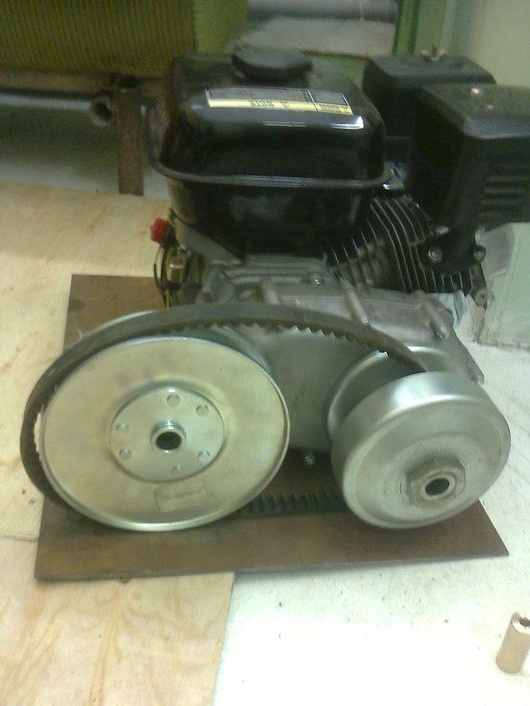
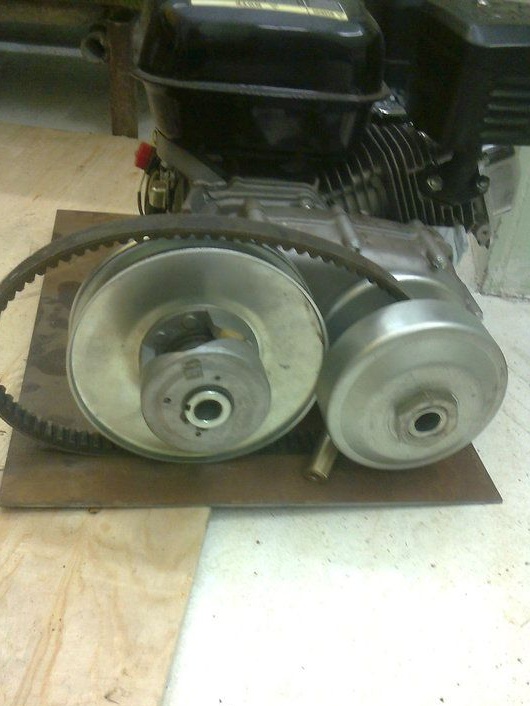
A small pulley, which, with loads and a large nut, was fixed on the motor shaft, and it is the leading one. A large pulley with a spring and oblique stops is driven, it was installed as follows: the belt pulls the pulley cheeks, and the cheek scarf runs into the reciprocal scarf. Then the stopper is pulled off, the side of the scarf is thrown over and the driven pulley is installed.
After installation and testing, a miscalculation was discovered, the fact is that the drive pulley is designed for revolutions of 1000-3500, and this all-terrain vehicle has a 1: 2 clutch, so the shaft spins 500-1700 revolutions per minute. Therefore, the variator will not work with a similar scheme, so the author was faced with the choice of either increasing the weight of the weights or replacing the engine.
A variator is necessary, since it acts as a clutch, for this the belt was slightly tensioned so that the motor would spin. moreover, the cheeks of the drive disc should not touch the belt.
Perhaps it is necessary to increase the number of electric rivets so that the shafts are not ripped off under heavy loads, but this can only be seen in practice.
But the author cannot test the all-terrain vehicle, since the variator does not work.
More precisely, it works but not in the way it should be caused by too low revs.
Therefore, the author decided to replace the engine with a bodyshell with a capacity of 9 liters. from.
While the author was thinking about replacing the engine, he began work on the transmission.
The shafts were connected:
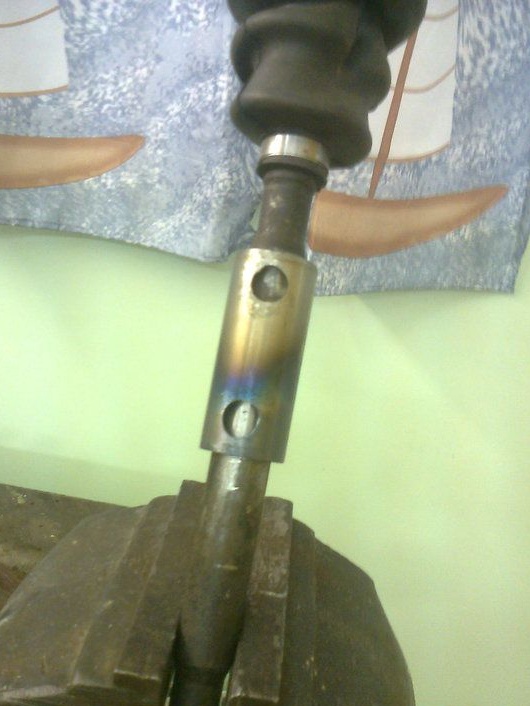
The lifan engine was installed and the intermediate gearbox connected:
Turning was also completed and the author proceeded to the collection of hubs. Despite the fact that the axis is only 12 mm, it should fully withstand the mass of the all-terrain vehicle. A bearing with an inner diameter of 17 mm was installed. The disk was taken from a Chinese scooter, and the brakes and hydraulics from a motorcycle Minsk. the author decided to do without the rear brake:
After assembling and installing all the parts, the author proceeded to test the all-terrain vehicle. the machine easily pulls a load of up to 300 kilograms on soft but even soils. the maximum speed of the all-terrain vehicle turned out to be about 30 kilometers per hour.
But there were some problems after replacing the variator belt: it started to engage, the reverse became possible to turn on only with the engine turned off, moreover, there were problems with the brakes. therefore, the author proceeded to adjust the idle operation of the engine, since the deflection of the belt on the variator visually remained the same.
The author also plans to engage in more detailed adjustment of the forward variator and the installation of rear brakes on an all-terrain vehicle.
Photos of the off-road vehicle:

The author of an all-terrain vehicle with the nickname "DV" from the city of St. Petersburg.

